Ready to learn about 75+ popular fish starting with K? These fish are popular for a variety of reasons including their beauty, their availability, and their suitability for aquariums.
- Koi Cyprinus – rubrofuscu
- Kingfish – Scomberomorus cavalla
- Kikusui – Rosaceae
- Killifish – Fundulus heteroclitus
- Knifefish – Apteronotus albifrons
- Kobudai – Semicossyphus reticulatus
- Kutum – Rutilus kutu
- Kuruma shrimp – Marsupenaeu
- Kelp perch – Brachyistius frenatus
- Kyphosus – Kyphosus
Also these fish are well-liked for a number of different reasons, including, low maintenance needs, and eye-catching design.
Contents
Popular Fish Starting With K
Many similar posts:
- Popular Fish That Start With A
- Popular Fish That Start With M
- Popular Fish That Start with L
- Popular Fish That Start with G
1. Koi – Cyprinus rubrofuscu
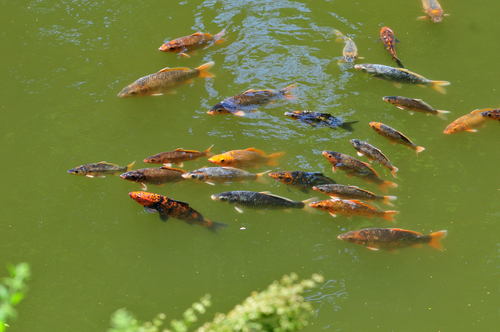
Koi fish are a type of carp that originated in China over 2,000 years ago. They were originally bred for their meat, but eventually became a symbol of good luck and prosperity.
In the 8th century, Buddhist monks brought koi fish to Japan, where they quickly became popular among the country’s nobility.
During the Meiji period in Japan (1868-1912), koi fish began to gain popularity outside of the aristocracy. This is largely due to Emperor Meiji, who was known for his love of koi fish and often gifted them to foreign dignitaries.
As a result of this increased exposure, koi fish began to be bred for their color patterns rather than their size or ability to produce offspring.
Types of Koi Fish Scomberomorus cavalla
There are many different types of koi fish, each with its own unique pattern and color combination. The most popular variety is the Gosanke, which includes the Kohaku, Taisho Sanshoku, and Showa Sanshoku koi fish.
Kohaku koi are white koi with red patterns. Taisho Sanshoku koi are white koi with red and black patterns. Showa Sanshoku koi are black koi with white and red patterns. Gosanke koi are considered the most traditional and elegant type of koi; as such, they command high prices on the market.
Other popular types of koi include Asagi (blue-green koi with reddish-orange bellies), Shusui (solid blue or blue-and-white scaled koi), and utsuri (black koi with white or yellow patterns).
2. Kelp perch – Kyphosus
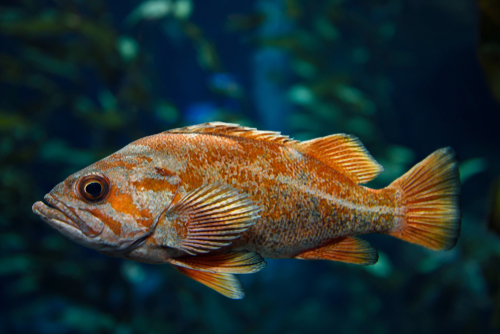
The kelp perch is a small, greenish-brown fish that is found in the waters off the coast of California. It is a member of the wrasse family and can grow to be about 12 inches long.
The kelp perch is an important part of the marine ecosystem and plays a role in controlling the kelp forest population. The kelp perch is a voracious predator and feeds on a variety of small invertebrates, including crabs, shrimp, and other fish.
This makes the kelp perch an important part of the marine ecosystem because it helps to control the populations of these animals. In turn, this helps to keep the kelp forest in balance.
The kelp perch is also an important food source for larger predators, such as sharks, seals, and dolphins. These animals help to keep the kelp perch population in check by preying on them.
This keeps the kelp perch from becoming too populous and damaging the delicate balance of the kelp forest ecosystem.
3. Kyphosus- Brachyistius frenatus
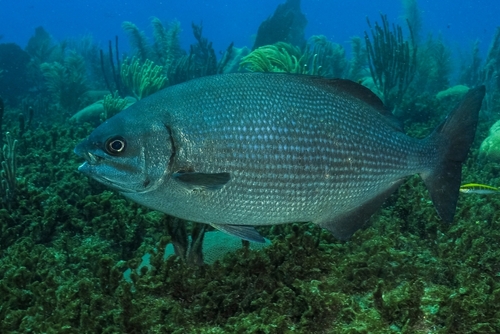
The Kyphosus is a genus of fish that includes 16 different species. They are also commonly known as sea chubs or surgeonfishes. These fish are found in tropical and subtropical waters all over the world.
Kyphosus are relatively small fish, with most species only growing to be about 12 inches long.
The Kyphosus diet consists mostly of algae. In fact, these fish play an important role in maintaining the health of coral reefs by grazing on algae that can otherwise overwhelm and smother the coral. Kyphosus are also known to eat small invertebrates and zooplankton.
4. Kikusui – Fundulus heteroclitus
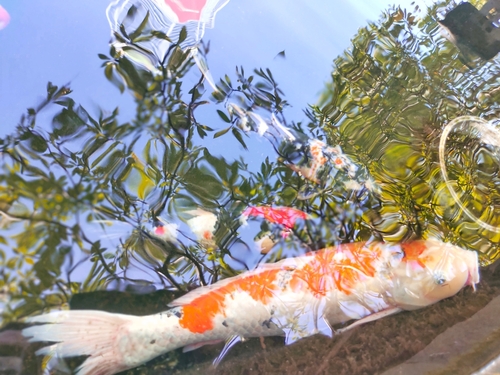
The Kikusui fish is a freshwater fish that is native to East Asia. It is also known as the Japanese crucian carp or the Japanese goldfish. The Kikusui fish is a popular pet and can be found in many homes in Japan.
The Kikusui fish is a member of the carp family and can grow to be about 18 inches long. The body of the Kikusui fish is reddish-brown in color and has a blackspot on the tail. The fins of the Kikusui fish are red and the scales are small and black.
The Kikusui fish is a hardy fish and can live in a wide range of environments. They are typically found in ponds and lakes but can also be found in streams and rivers. The Kikusui fish is an omnivore and will eat both plants and animals.
5. Killifish – Fundulus heteroclitus
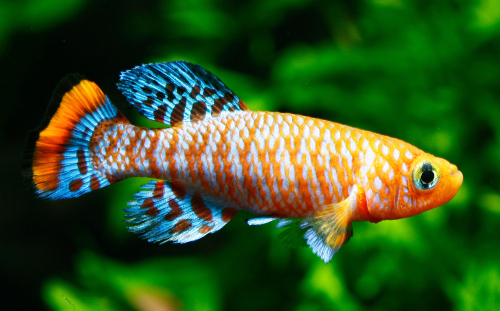
The killifish is a small, freshwater fish that is native to North America. It gets its name from the fact that it is often found in areas with high levels of pollution.
The killifish is a hardy fish that can live in a wide range of habitats, including ponds, lakes, and streams. It is an important food source for many animals, including birds, reptiles, and mammals.
The killifish is a small fish that typically grows to be between two and four inches long. It has a slender body with a long tail. The killifish is usually green or brown in coloration, but some species can be brightly colored. The killifish has a lifespan of two to three years.
The killifish is an opportunistic feeder that will eat just about anything it can fit into its mouth. Its diet includes insects, crustaceans, worms, and small fish. The killifish is an important part of the food chain in many ecosystems. It is preyed upon by larger fish, birds, reptiles, and mammals.
The killifish is found throughout North America in freshwater habitats such as ponds, lakes, and streams. It prefers areas with high levels of pollution.
The killifish is able to withstand environmental conditions that would be lethal to other fish species. This makes it an important part of the ecosystem in many polluted areas.
6. Knifefish – Apteronotus albifrons
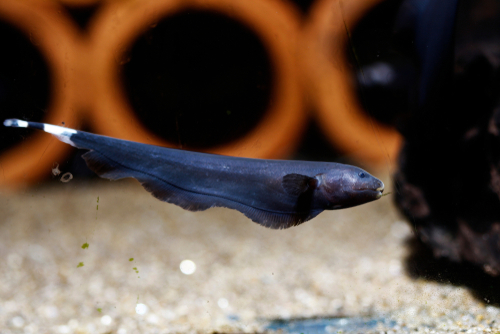
The knifefish is a type of fish that is known for its long, sharp knife-like nose. These fish are found in freshwater rivers and streams all over the world. They are predators that use their sharp noses to slice through the water and catch their prey.
Knifefish are also known to be skilled jumpers and can often be seen leaping out of the water to catch insects or other small animals.
The knifefish is a member of the carp family and can grow to be up to three feet long. Their bodies are elongated and they have large scales that help them move swiftly through the water. The knifefish gets its name from its long, sharp nose which can be up to 18 inches long!
This sharp nose is used to slice through the water and allows the knifefish to sense its prey even in murky waters. Knifefish are also known for their ability to jump out of the water and catch insects or other small animals.
Knifefish are found in freshwater rivers and streams all over the world. They are most commonly found in tropical or subtropical climates. In the wild, knifefish can live for up to 10 years. These fish are not commonly kept as pets but they can be found in some aquariums.
7. Kobudai – Semicossyphus reticulatus
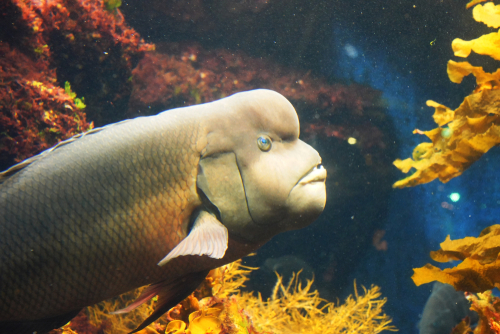
The Kobudai fish is an impressive creature. It can grow to be up to 11 feet long and weigh over 1,000 pounds! What’s even more impressive is that this fish is capable of changing its sex. If the conditions are right, a female Kobudai fish can turn into a male.
This change usually happens when there are more males than females in a particular area. By changing its sex, the Kobudai fish ensures that there will be enough mates for everyone and that reproduction can continue.
Another interesting thing about the Kobudai fish is that it has a blue strip running down its body. This blue strip is actually made up of tiny scales that reflect light in such a way that it creates the illusion of a continuous line of blue.
8. Kutum – Rutilus kutu
The Kutum fish (scientific name: Rutilus kutum) is a freshwater fish that is native to the Caspian Sea basin. It is an important food source in the region, and is also commercially fished.
The Kutum fish is a member of the carp family, and can grow to a length of up to 80 cm (31 inches). It has a silver-gray body with a greenish tinge, and is covered in small scales.
The Kutum fish is an opportunistic feeder, and will eat a variety of food items including insects, crustaceans, and small fishes.
The Kutum fish is an important species in the Caspian Sea ecosystem. It is a top predator, and helps to keep the population of other fishes in check. The Kutum fish is also an important food source for humans and animals in the region.
The Kutum fish has been commercially fished for centuries, and its meat is considered to be a delicacy in some parts of the world. In addition to being eaten fresh, the Kutum fish is also often smoked or dried.
9. Kingfish – Rosaceae
Kingfish are also known as king mackerel, and for good reason. They’re the largest members of the mackerel family, and can grow to be over six feet long and weigh over 200 pounds.
But don’t let their size intimidate you; kingfish are relatively easy to catch, and make for excellent eating. In fact, kingfish are considered by many to be the tastiest of all the mackerels.
Kingfish are found in both fresh and salt water all along the coast of North America, from New England to Florida and even as far west as California.
They’re a popular target for both commercial and recreational fishermen alike, as they’re relatively easy to catch and provide a good haul. In fact, kingfish are so popular that there is an annual kingfish tournament held in many coastal towns up and down the East Coast.
10. Kuruma shrimp- Marsupenaeu
The Kuruma shrimp is a type of freshwater prawn that is native to Japan. It is named after the Japanese city of Kurume, where it was first discovered.
The Kuruma shrimp is characterized by its delicate flavor and firm texture. It is a popular ingredient in Japanese cuisine and is often used in sushi and sashimi.
Kuruma shrimp are relatively easy to cook. They can be grilled, boiled, or sautéed. We recommend keeping the cooking time short so as not to overcook the shrimp and ruin their delicate flavor. When cooked properly, Kuruma shrimp should be pink in color with slightly translucent flesh.
Freshwater fish that start with the letter K
1. Kiener’s silverside- Teramulus kieneri
2. Kneria wittei- Kneriidae
3. Kumba japonica -Kumba japonica
4. Knipowitschia mrakovcici -Knipowitschia mrakovcici
5. Knifejaw Oplegnathus- fasciatus
6. Krishna mystus- Nilgiri mystus
7. Kentrocapros eco- Aracanidae
8. Koningsberger’s herring- erklotsichthys koningsbergeri
9. Karimunjawa dottyback- Pseudochromis ransonneti
10. Klamath Lake sculpin- Cottus princeps
Tropical fish that start with k
- Kali macrura- Chordata
2. Katavi mouthbrooder -Haplochromis katavi
3. Kashmir latia- Cirrhina latia
4. Knife-snouted pipefish- Hypselognathus rostratus
5. Pool Barb -Puntius sophore
6. Krefft’s smooth-head -Philypnodon grandiceps
7. Kupang ponyfish -Eubleekeria kupanensis
8. Klausewitz’ garden eel -Heteroconger hass
9. Kerala mystus -Mystus armatus
10. Kanadi kingfish -Scomberomorus plurilineatus
Saltwater fish that start with K

- Kelp klipfish -Heterostichus rostratus
2. King-of-the-Salmon -Trachipterus altivelis
3. Klamath smallscale sucker -Catostomus rimiculus
4. King of herrings Regalecus -glesne
5. Krishna carp- Hypselobarbus dobsoni
6. Kosswigobarbus- kosswigi
7. Kulbicki’s triplefin -Springerichthys kulbickii
8. Kukwari sea catfish -Notarius phrygiatus
9. Kali parri- Chiasmodontidae
10. Katria katria- Katria katria
11. Knodus borki -Knodus borki
12. Kumakuma -Brachyplatystoma filamentosum
13. Kelpfish- Heterostichus rostratus
14. Kumaon snowtrout- Schizothorax kumaonensis
15. Kolpotocheirodon -figueiredoi characins
16. Kimberley grunter – Syncomistes kimberleyensis
17. Kali falx -Chiasmodontidae
18. Kapala stingaree- Urolophus kapalensis
19. Kentucky darter Etheostoma rafinesquei
20. Killifish Fundulus- heteroclitus
21. Kentrocapros- flavofasciatus
22. Kunashir smelt- Hypomesus nipponensis
23. Kosogol grayling -Thymallus nigrescens Dorogostaisky
24. Key brotula- Ogilbia cayorum
25. Knifefish- Notopteridae
26. Kermadec spiny dogfish – Squalus raoulensis
27. Kafue killifish – Nothobranchius kafuensis
28. Kali walu – Corydoras aeneus
29. Killifish – Fundulus heteroclitus
30. Kocha garua – Clupisoma garua
31. Kindia killi – Scriptaphyosemion cauveti
32. Kalabans – Bangana dero
33. Kelp weedfish – Heteroclinus eckloniae
34. Kelp sculpin – Myoxocephalus octodecemspinosus
35. Kryptopterus lumholtzi – Kryptopterus lumholtzi Rendah
36. Kariba tilapia – Oreochromis mortimeri
37. Khaki flounder – Paralichthys

Ian Sterling, founder of Fishlab.com, began his aquarium journey over 30 years ago, driven by a deep fascination for fish and their diverse personalities. His website, Fishlab.com, is dedicated to making fishkeeping accessible and enjoyable, offering beginner-friendly guidance, expert insights, and a community for aquarists to connect and share experiences.

